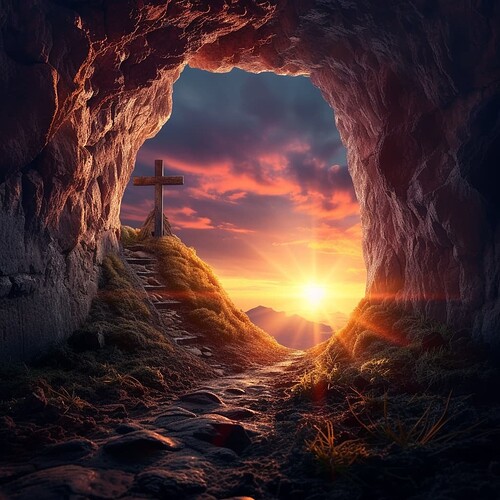 February 19: Mark 15, 16 - Christ’s Passion and Resurrection: Journey Through Trials and Triumph
February 19: Mark 15, 16 - Christ’s Passion and Resurrection: Journey Through Trials and Triumph
 Introduction
Introduction
Mark 15 and 16 present a whirlwind journey fraught with accusations, trials, and suffering, ultimately culminating in the miraculous resurrection of Jesus Christ. As we traverse these monumental events, we encounter the paradox of the Savior - humiliated, yet majestic, slaughtered, yet victorious.
 Mark 15: The Trial and Crucifixion
Mark 15: The Trial and Crucifixion
We find Jesus in the hands of Pilate, before the crowd, subjected to ridicule and abuse. Despite His innocence, He is sentenced to death.
Key Verse: “Wanting to satisfy the crowd, Pilate released Barabbas to them. He had Jesus flogged, and handed him over to be crucified.” - Mark 15:15
 Mark 16: The Resurrection
Mark 16: The Resurrection
In a plot twist that shatters despair, we witness the resurrection of Christ. The tomb is empty, and an angel, appearing as a young man in a white robe, delivers the glad tidings to the women.
Key Verse: "Don’t be alarmed … You are looking for Jesus the Nazarene, who was crucified. He has risen! He is not here. "- Mark 16:6
 Key Themes and Reflections
Key Themes and Reflections
1. Human Failure & Divine Redemption: The sweeping account asserts the magnitude of human failure against divine redemption. Despite betrayal from one of His own and denial by His closest disciple, Christ’s purpose remains unaltered - our redemption.
2. Hope in the Midst of Despair: Christ’s resurrection reinforces the promise of life after death, and hope that conquers despair. It reminds us that our journey doesn’t end with death, but transcends into eternal life.
 Today’s Application
Today’s Application
In Mark 15 and 16, we’re reminded that, like Christ, we may face trials and tribulations. Yet we have reassurance in His promise of triumph over the worldly. Every ending paves way for a new beginning, every death brings forth life.
 Hidden Gem
Hidden Gem
Did you notice that each Gospel portrays slightly different reactions to the empty tomb? In Mark, the women flee in fear and amazement. This human response showcases the authentic and relatable nature of the bible.
 Reflective Q&A
Reflective Q&A
![]() What does the story of Jesus’s trial and crucifixion teach us?
What does the story of Jesus’s trial and crucifixion teach us?
A: It teaches us about Christ’s ultimate sacrifice to fulfill His divine mission and redeem humanity, even in the face of extreme suffering.
![]() What is the significance of the resurrection?
What is the significance of the resurrection?
A: The resurrection signifies Christ’s victory over death, asserting the promise of eternal life and giving us hope in times of despair.
 Join the Discussion
Join the Discussion
Share your thoughts on these chapters and insights you’ve gleaned. What verses resonated with you the most?
 See You Tomorrow in 1 Corinthians 1, 2
See You Tomorrow in 1 Corinthians 1, 2
Prepare to dive into the deep waters of Paul’s wisdom. Confront the crossroad of worldly philosophy and the truth of the Crucified Christ.
Blessings, as we journey together into the depths of God’s enduring story. Mark 15 and 16 demonstrate the unbeatable hope of the resurrection after the stark reality of the crucifixion, and this remains a comforting beacon in our lives, no matter the trials and tribulations that come our way.
